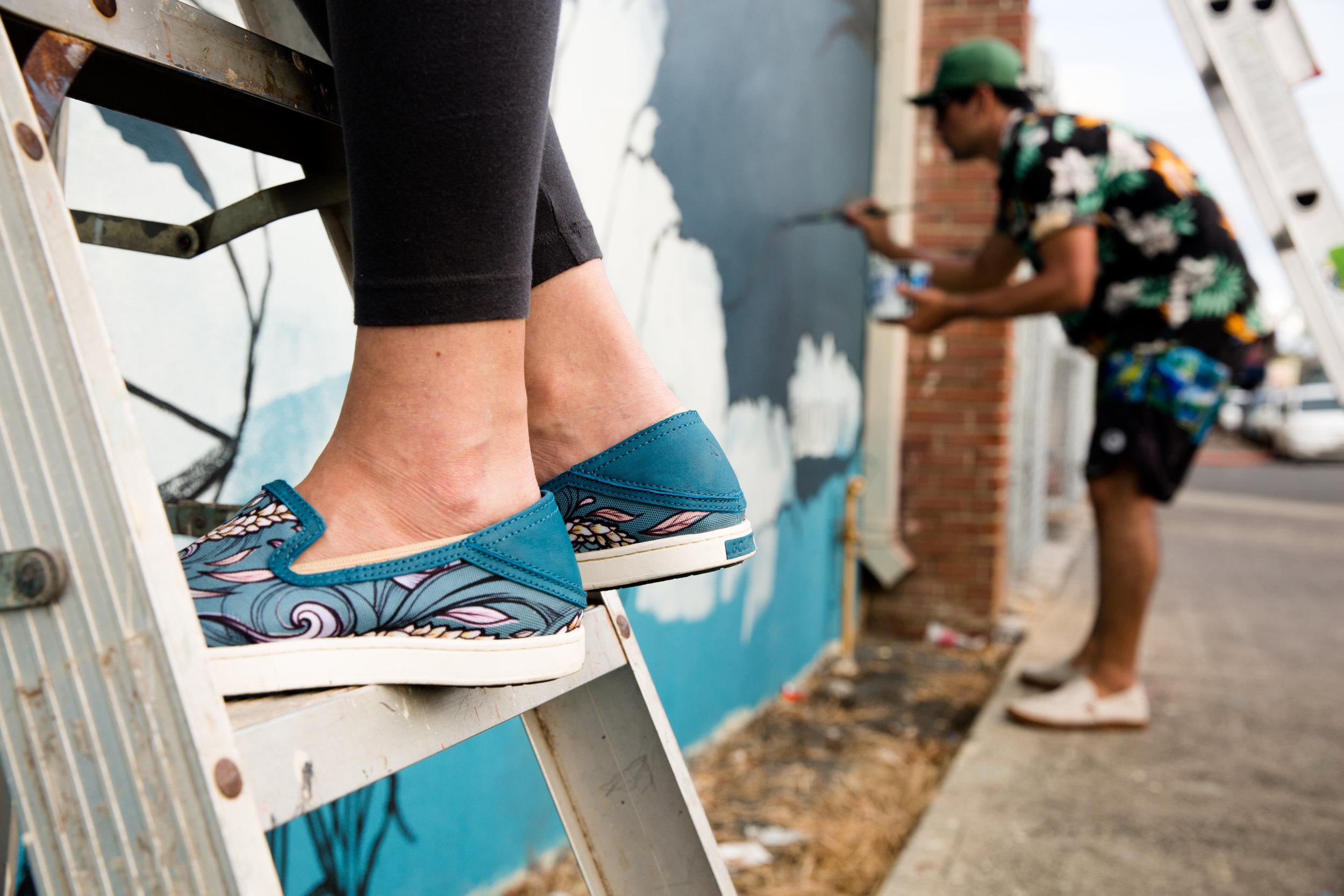Collective Efforts
Stay Wild
Reforesting Hawai’i
Story by Amy Morrison
Getting dirt under your nails while on vacation is always a good sign that you’ve climbed a mountain, built a sandcastle, or scurried over a fallen log. During my family’s last trip to the big island of Hawai’i, we got dirty nails by planting koa trees in a large native forest restoration project. Little did I know, that bit of dirt would have a bigger story to tell.
Our story started in a rental car. That familiar moment when you realize how much you rely on your cell phone, when there’s no coverage and no directions. The road just keeps going and you’re not so certain you should follow it. But we do. Straight past the no trespassing sign, through a grove of eucalyptus trees, and into a small gated community with colorful pheasants running under old cattle fencing. We spot the house with the small sign we’ve been looking for: Hawaiian Legacy Forest.
After a warm welcome, we pick out our three koa tree saplings and venture into the forest with our guide on a bumpy quad ride. This isn’t the Hawai’i forest you might be imagining. There is no tropical jungle. We’re up-country, at a higher elevation with windblown grassy fields and cows that have a million-dollar ocean view. The open landscape breaks on occasion with groves of young bushy koa trees, a mixed understory of ‘iliahi (sandalwood), and ‘õhi‘a trees. The contrast between grazed land and reforested land is easy for any visitor to see.
We stop on a bluff under a towering old-growth koa tree, the first we’ve ever seen. Its long, oak-like limbs have grown so big they fall back down to the ground before sprouting up again. In this grassy landscape, the koa tree is majestic and inspires my interest in the story behind this tree and this place.
On our ride, we have a chance to learn about Hawaiian Legacy Forest and its efforts to restore and preserve the valuable koa tree forest. The forest is valuable on a number of levels. Monetarily, it’s a sought-after hardwood for high-end furniture, crafts, and musical instruments. Ecologically, its habitat is scarce, impacted by logging and cattle grazing.
Koa trees only grow on the Hawaiian Islands and support a network of other native Hawaiian plants and animals. Culturally, the trunk of mature koa trees have been used by Hawaiians in carving outrigger canoes, and smaller style surfboards. Koa is essential to the culture’s longstanding connection to the environment.
As visiting volunteers, we got our chance to be a part of the conservation effort. We cleared three small circles in the grass with shovels, then dug a small slot in the ground just the right size for this new tree’s tangle of roots. With our hands, we gently covered the roots with dirt and pushed down, making sure the ground was firm and supportive. Our guide brought a gourd full of water, and we took a moment to pour the tree’s first water in its new home over our hands and into the dirt, offering our good intentions to this good deed.
Yet this good deed is clearly reliant on a much larger collective effort. Through partnerships with organizations and businesses, Hawaiian Legacy has been able to plant and restore acres of koa forest. One business that contributes to this effort is Arbor Collective, a well-established snow, skateboard, and clothing company based in California.
Arbor’s story starts with their mission to source sustainable materials for their products and their sense of gratitude for Hawaiian culture. Longtime masters of the use of koa wood, Hawaiians took koa boards to the water, and inspired the world of boardsports that so many of us now know and love.
Thankful for this cultural genius, and intent to preserve its source, Arbor and its customers have been actively restoring Hawaiian Island hardwood forests for over 20 years. Not all of them have been getting dirt under their nails, but with every purchase of an Arbor board, a portion of that sale goes to planting and protecting this one-of-a-kind forest ecosystem.
Wanting to know more, I had a chance to speak with one of Arbor’s founders, Bob Carlson, who stressed the importance of not just planting trees and then feeling good about it. It’s also the quality of care that it takes to protect these trees and turn them into a healthy forest ecosystem. Having supported a variety of forest conservation efforts in Hawai’i, Arbor is proud to be part of the long-term vision and restoration success of Hawaiian Legacy Forest—and leaving a lasting legacy on this uniquely Hawaiian landscape.
For another perspective, I reached out to Arbor’s sponsored skateboarder, Kj Nakanelua. Kj is based in Hawai’i and has bombed the hill down from the reforestation project.
“I’m an aspiring arborist, a novice woodworker, and just flat-out passionate about trees. So it’s easy to see why I’m behind this movement. Trees are my life’s work: studying them, working with them on a daily basis, and of course riding them downhill, in skateparks, and wherever I can.”
Whether your story starts with planting trees on a family vacation, buying a new skateboard, or running a conscious company, together our collective efforts can preserve the ecosystems that our lifestyles depend on.
Learn more about Hawaiian Legacy Reforestation Initiative





















